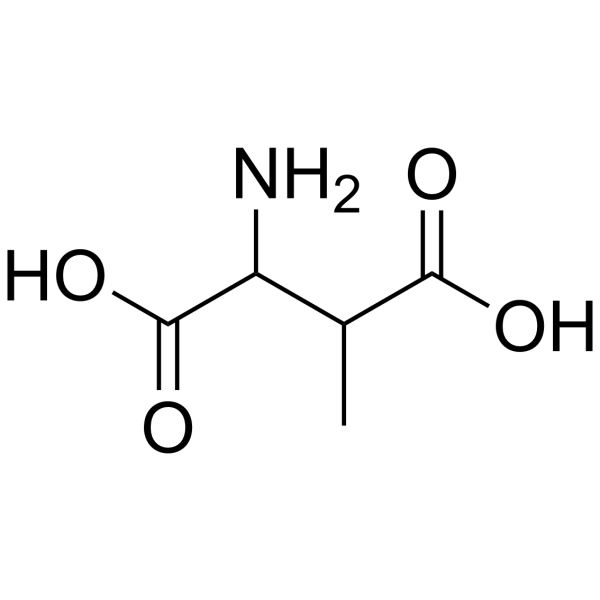Mechanism of C-3 hydrogen exchange and the elimination of ammonia in the 3-methylaspartate ammonia-lyase reaction.
N P Botting, D Gani
文献索引:Biochemistry 31(5) , 1509-20, (1992)
全文:HTML全文
摘要
The enzyme 3-methylaspartate ammonia-lyase (EC 4.3.1.2) catalyzes the exchange of the C-3 hydrogen of the substrate, (2S,3S)-3-methylaspartic acid, with solvent hydrogen. The mechanism of the exchange reaction was probed using (2S,3S)-3-methylaspartic acid and its C-3-deuteriated isotopomer. Incubations conducted in tritiated water allowed the rate of protium or deuterium wash-out from the substrates to be measured as tritium wash-in. The primary deuterium isotope effects for the exchange under essentially Vmax conditions ( [S] much greater than Km) were 1.6, 1.5, and 1.5 at pH 9.0, 7.6, and 6.5. The deamination reaction, measured spectrophotometrically on the same incubations, showed isotope effects of 1.7, 1.6, and 1.4 at pH 9.0, 7.6, and 6.5, in agreement with the values of DV and D(V/K) reported previously [Botting, N.P., Akhtar, M., Cohen, M.A., & Gani, D. (1988) Biochemistry 27, 2956-2959]. The ratio of the rate of exchange to the rate of deamination, however, varied widely with pH. Together with the identical values of the primary isotope effects for the two reactions, this result indicates that the partition between reaction pathways occurs after the slowest steps in the common part of the reaction coordinate pathway, almost certainly after the cleavage of the C-N bond at the level of the enzyme-ammonia-mesaconic acid complex, and not at the putative carbanion level as was previously suggested. The enzyme requires both K+ and Mg2+ ions for activity, although ammonium ion is also able to bind in the K+ site and act as an activator. Variation of the metal ion concentration alters the magnitude of the primary deuterium isotope effects. The variation of potassium ion concentration causes the most marked changes: at 1.6 mM K+, DV and D(V/K) are 1.7, whereas at 50 mM K+, DV and D(V/K) are reduced to 1.0. The isotope effects are also reduced at low K+ concentration due to the emergence of a slow-acting high K+ affinity monopotassium form of the enzyme. The binding order and role of the metal ion cofactors and their influence in determining the formal mechanism of the reaction is discussed, and the failure of previous workers to observe primary deuterium isotope effects for the deamination process is explained. The product desorption order was tested by product inhibition, alternative product inhibition, and isotope exchange experiments. Ammonia and mesaconic acid debind in a random fashion.(ABSTRACT TRUNCATED AT 400 WORDS)
相关化合物
| 结构式 | 名称/CAS号 | 分子式 | 全部文献 |
|---|---|---|---|
 |
3-甲基天门冬氨酸
CAS:6667-60-3 |
C5H9NO4 |
|
Electronic structure studies of the adenosylcobalamin cofact...
2005-11-22 [Biochemistry 44 , 15167-15181, (2005)] |
|
Interconversion of (S)-glutamate and (2S,3S)-3-methylasparta...
2001-08-22 [J. Am. Chem. Soc. 123(33) , 7963-72, (2001)] |
|
[Oxidative deamination of beta-methylaspartic acid].
1979-07-15 [Boll. Soc. Ital. Biol. Sper. 55(12) , 1189-95, (1979)] |
|
The role of the active site glutamate in the rearrangement o...
2001-12-01 [Chem. Biol. 8(12) , 1143-9, (2001)] |
|
The structure of 3-methylaspartase from Clostridium tetanomo...
2002-03-08 [J. Biol. Chem. 277(10) , 8306-11, (2002)] |